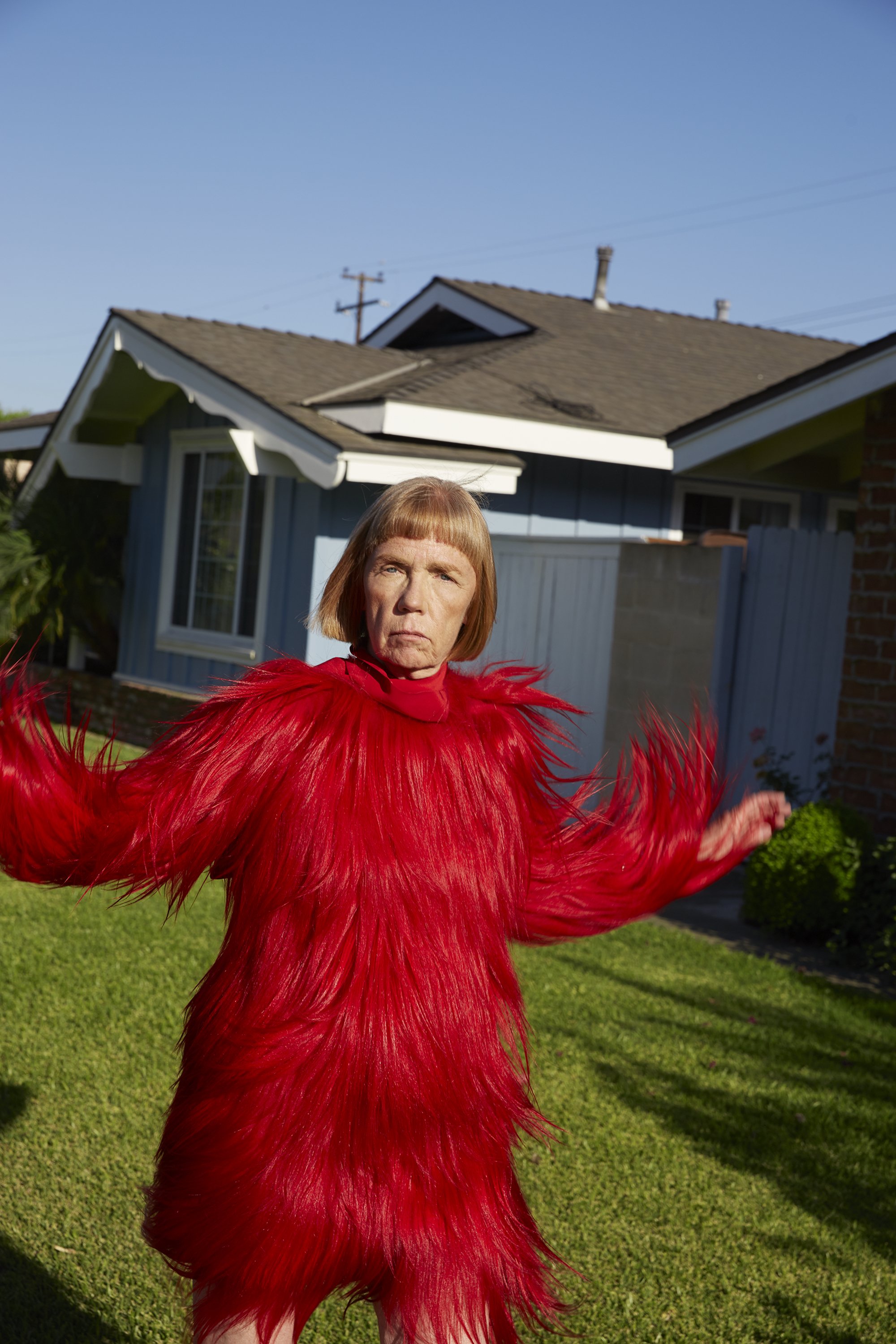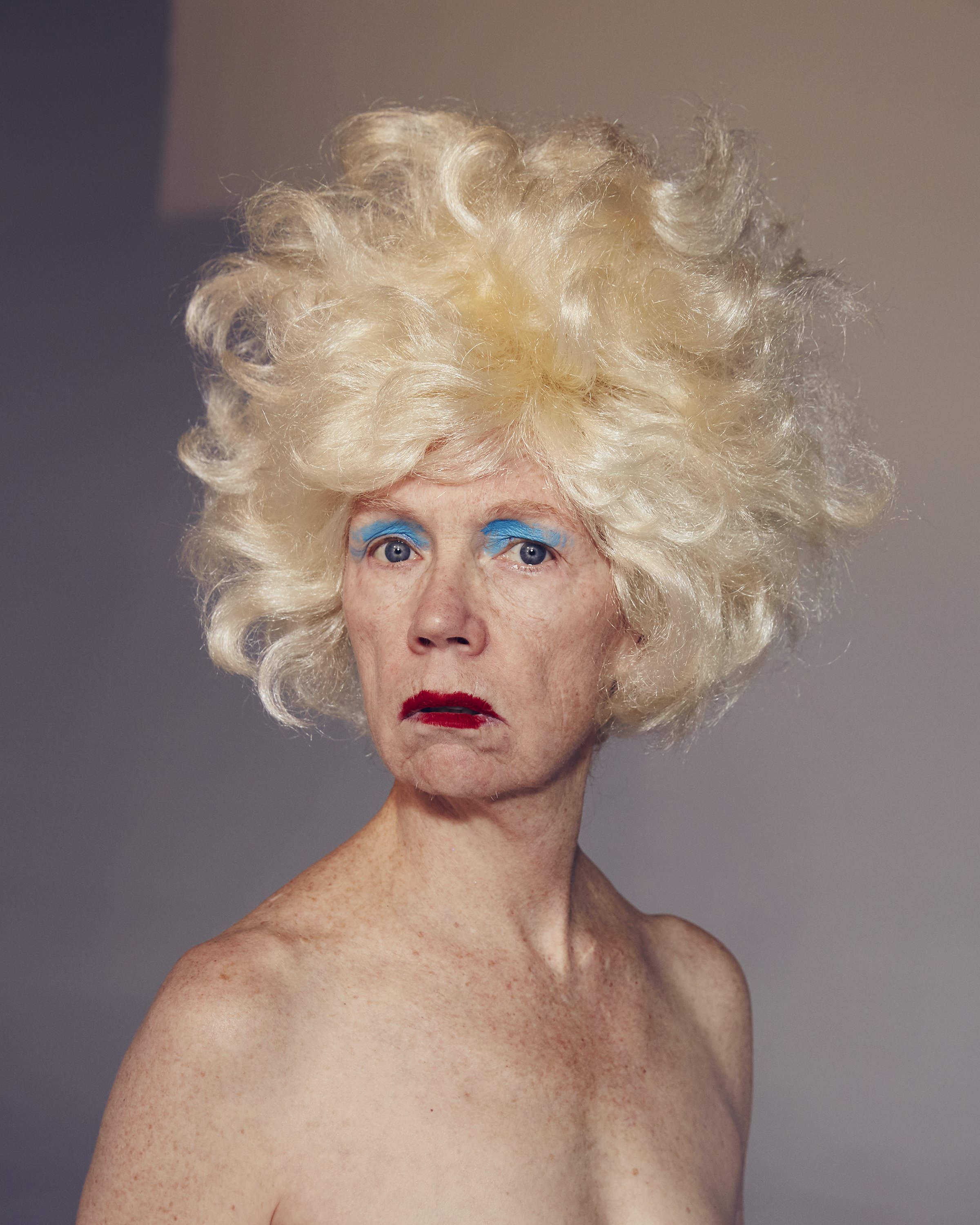The Familial Unfamiliar: Charlie and Kathleen McCain Engman and the Disruptive Power of Family Collaboration
Image courtesy of Charlie Engman
When thinking about contemporary artists who reflect on the dynamics of collaboration within the act of photographing, I couldn’t help but think of Charlie Engman. Born in 1987, in Chicago, Charlie is a photographer, visual artist, and currently the creative director of the fashion brand Collina Strada. His practice can be framed within a general context of awareness and cognizance towards the notion of authorship in the art discourse, and precisely in photography. In 2008, theorist Ariella Azoulay wrote The Civil Contract of Photography, a seminal book for anyone interested in lens-based art. [1] Here, she defined photography as the result of an encounter between two people: the photographer, and the subject. She highlighted the power dynamics underlying this kind of relationship between the two figures involved: Why is the subject always considered to be passive, ready to offer their own image without having any control over it? Can the subject claim any participation in the authorship? Who is the real author of the image? These questions, which may seem obvious to us today, turned the perspective of those working with images upside down at the time. Her essay has been groundbreaking, especially regarding the hegemonic photojournalistic approach, opening up a new way to view the intent of the act—and the rights—of photography. Still, this critical concern has spread to other genres of photography, such as fine art and fashion, prompting artists to rethink how they make images. The common element across all photographic fields is that in order to give agency back to the representation of people and communities that have long been instrumentalized—whether war refugees or bodies of women who do not fit the standards of fashion magazines—a collaborative approach has often been adopted, allowing the subjects of a photograph some control of their own image.
Charlie Engman is well aware of this ongoing discourse within the world of photography and his work shows it. His images stand out with a sculptural aesthetic applied to his subjects, who lend themselves to a meticulous, co-authored performative act, often resulting in an outlandish fashion image that does not care to be “perfect” in the most typical sense of the word. Among the extravagant characters playing in front of his lens, one is particularly striking: his mother, Kathleen McCain Engman, with whom he has been collaborating since 2009. Their collaboration, which balances the urgency of seeking the unfamiliar with the intimacy of a familial relationship, has culminated in a book of layered, iconographic collages titled Mom, published by Edition Patrick Frey in 2020.
Kathleen was deeply involved in the details of each shot, from costumes to makeup, poses and expressions, taking on multiple roles with an authentic appeal: you can see it in the face of a woman with her makeup removed, revealing her defects; or in that of a lady in red whose gaze is penetrating and almost threatening; or yet, you observe the stupefied and disheveled expression, almost melancholic, of a figure wearing a striking blond wig and make up—the lipstick, however, reveals a smudge that suggests that not everything is as it seems.
“I think the fact I’m including my mom in fashion somehow looks like a political gesture. And it is, insofar as any kind of participation is political. But for me I actually think that my mom is just interesting to look at, and beautiful and valuable in her own ways”
Intrigued by his work, I reached out to Charlie to discuss his practice. He explained that, while he was training as a fashion photographer his mother was one of the closest subjects he had, hence the decision to involve her in his shoots was natural. “Without thinking very hard about it, I decided to include her in one of my fashion editorials. Once I did that, it made me understand a lot about the dynamics and mechanics of fashion photography—something that I was maybe taking for granted. For me personally, it opened up more possibilities for how I could work in fashion,” he said. Charlie’s work offers an imaginary free of the glamorous and unnatural images customary in fashion. Anyone who looks carefully at the pages of a newspaper, or at the fashion campaigns seen on billboards in the street, can see that there are recurring patterns, lifestyles, models, and bodies in which it is difficult to recognize oneself. The recent slight improvements in this condition are thanks in part to many young photographers who, like Charlie, are challenging these kinds of discriminatory dynamics. Charlie himself has often felt deeply excluded from fashion imagery, and precisely this idiosyncratic relationship with the industry has pushed him to expand the boundaries of accessibility and inclusivity within the fashion experience. “I think the fact I’m including my mom in fashion somehow looks like a political gesture. And it is, insofar as any kind of participation is political. But for me I actually think that my mom is just interesting to look at, and beautiful and valuable in her own ways,” he says, pondering the social role of his photographs.
Although there are many previous cases of representation of middle-aged women in fashion (such as Dolce & Gabbana and Balenciaga’s catwalks, which have both presented age-diverse models, or the poignant Vogue Italia ‘Timeless’ issue from October 2017, completely dedicated to mature women), in the case of Charlie Engman there is something different. There is a sensitivity by which it is immediately easy to become drawn in, as if there is no glossy filter that flattens the real diversity of people. We observe the imperfection of Kathleen in those images where she’s portrayed almost disheveled, grabbed in moments that seem to be in transition—at times it is possible to read the tiredness in her eyes—and we wonder if such compositional staging is any less false than the planned shots that teach us to identify with stereotypes that we cannot (and frankly should not want to) conform to.
Image courtesy of Charlie Engman
Charlie’s photographic work, challenging the skewed narrative we are used to, aims to raise awareness around ethicality and sustainability in an intimate, and at the same time eccentric, way. This is the approach he also applies to his visual interpretation of Collina Strada, the sustainable brand created by Hillary Taymour that aims to encourage self-reflection through clothes. The brand is known for its fearlessly fluid attitude and re-interpretation of the way we conceive fashion details. Charlie’s role in the company quickly went from intern to a crucial figure in the development of the brand. He now holds the position of creative director, and is responsible for creating otherworldly imagery which is, at the same time, very concrete and relatable. “We’re trying very hard to be holistic in what we’re doing by avoiding any kind of hierarchy or compartmentalization,” he says, describing the workflow of the brand. “We want to see how we can push the ideas of transparency, collaboration, community, and humility. We try to integrate them into our creative processes and allow those things to actually be real and operate in the creative works that we do.” It is not surprising that Charlie’s mother is one of the protagonists of Collina Strada’s vision: a face with familiar features, apparently decontextualized, who emerges charismatically from hypnotic backgrounds.
When I asked Charlie about the role of collaboration within Collina Strada’s creative process and what it means for himself professionally speaking, he answered that “Anybody who is pretending that they’re not working in a collaborative way is just either hiding something or needs to express more self-awareness. Nothing happens in a vacuum; everybody needs to work with each other. Even if you’re in your studio by yourself taking pictures of your own body or objects, you still have a collaborative relationship with those objects and with your audience, or whoever you’re trying to engage with your imagery. Collaboration to me is a constant checking. It’s a lot about communication, reassessment, and self-reflective dialogue, and it’s very context-specific”. In this sense, Charlie's words remind us that the individual’s role only makes sense in relation to other people: in practical terms, this can lead to a broadening of perspectives and reinforce the strength of what we do because someone else believes in it.
I see in Charlie’s portraits a double value: on the one hand, they provide an example of diversity and inclusion in the fashion industry, and on the other hand, they transform into a precious exploration of the power of photography to create imaginaries, stereotypes, and ideologies. In fact, there is a lot of thinking and research that goes on behind his images, which, on the surface may seem “frivolous” or are deemed “just a fashion shoot.” Through his staged photographs, Charlie questions the creation and perpetuation of the hierarchies inherent in images, and challenges how they are created and disseminated with an eye on the social, cultural, and ideological context in which they appear. Kathleen's appearance as the protagonist of cutting-edge fashion campaigns trains people to accept different kinds of models of identification and inspiration.
Furthermore, their close collaboration is truly an act of change not only for the industry but also for Charlie himself. During our Zoom call, I asked him to tell me what he learned from the partnership with his mother. He hesitated as the words seemed to get tangled up in his throat. He could say many things, but it was difficult for him to put them in order, his thoughts were so spontaneous that verbalizing them almost seemed like a lack of respect. “I’ve learned a lot of lessons about how interpersonal relationships can be dependent on the context or scenario you’re in,” he said. “I’ve also learned how to really care for people and what it means to turn out your internal relationships and feelings towards a more outward-facing visibility, and allowing other people to comment on and observe something that is actually very private.”
The long-term partnership between Charlie and his mother demonstrates how crucial it is to make collaboration and togetherness the cornerstones of one's creative path. Being surprised by another can lead to wonderful discoveries, about ourselves above all.
Notes
[1] Ariella Azoulay, The Civil Contract of Photography, trans. Rela Mazali and Ruvik Danieli (Zone Books, 2008).
All images courtesy of Charlie Engman





